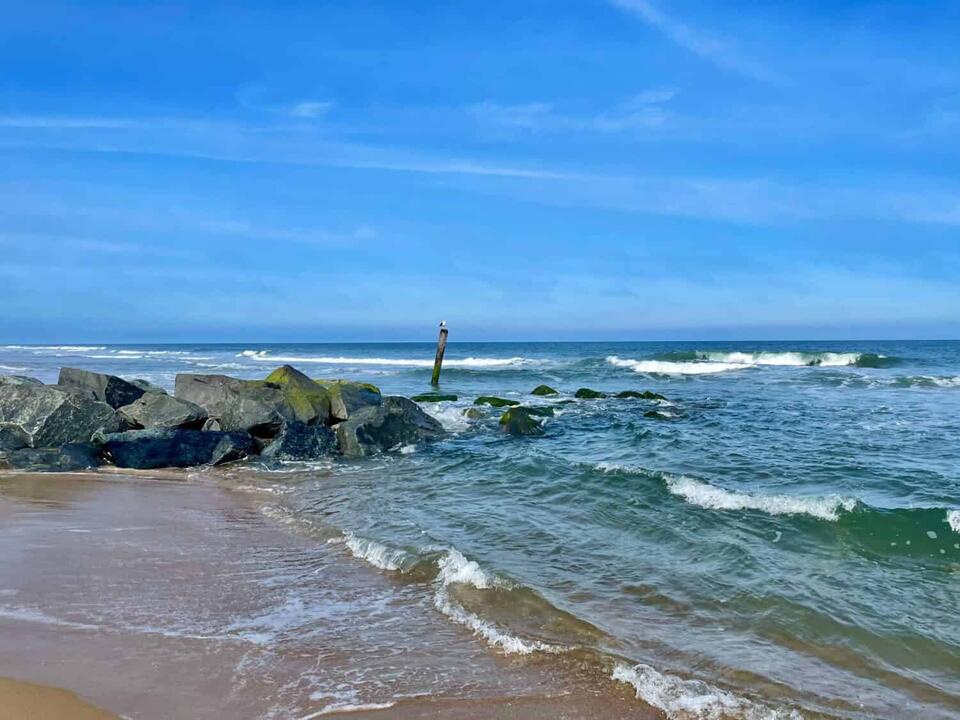Oceans In Connecticut

The state of Connecticut, located in the northeastern United States, is often associated with its picturesque coastline along the Long Island Sound. While not as vast as the open ocean, the waters surrounding Connecticut play a significant role in the state's ecosystem, economy, and recreational activities. The Long Island Sound, which borders Connecticut to the south, is a vital estuary that connects to the Atlantic Ocean. This body of water is approximately 110 miles long and 21 miles wide at its widest point, covering an area of about 1,320 square miles.
Connecticut's coastline stretches for approximately 96 miles, offering a diverse range of marine habitats, including sandy beaches, rocky shores, and salt marshes. These habitats support a wide variety of marine life, such as fish, shellfish, and birds. The state's coastal waters are also home to several islands, including Fisher's Island, which is located at the eastern end of Long Island Sound. With its unique blend of natural beauty and economic importance, the ocean in Connecticut is a valuable resource that requires careful management and conservation efforts.
Key Points
- The Long Island Sound is a vital estuary that connects to the Atlantic Ocean and plays a significant role in Connecticut's ecosystem and economy.
- Connecticut's coastline stretches for approximately 96 miles, offering a diverse range of marine habitats, including sandy beaches, rocky shores, and salt marshes.
- The state's coastal waters are home to a wide variety of marine life, such as fish, shellfish, and birds.
- Several islands, including Fisher's Island, are located off the coast of Connecticut and are an integral part of the state's marine ecosystem.
- Conservation efforts are necessary to protect the ocean in Connecticut and its diverse marine habitats.
Marine Life in Connecticut’s Coastal Waters

The marine life in Connecticut’s coastal waters is diverse and abundant, with over 100 species of fish, including striped bass, bluefish, and flounder. The state’s waters are also home to a variety of shellfish, such as oysters, clams, and mussels. These species play a crucial role in the ecosystem, serving as a food source for other marine animals and helping to maintain the balance of the marine environment. According to data from the Connecticut Department of Energy and Environmental Protection, the state’s marine fisheries generate approximately $30 million in revenue each year, highlighting the economic importance of these resources.
Threats to Marine Life in Connecticut
Despite the importance of marine life in Connecticut, several threats pose a risk to the state’s coastal ecosystem. Pollution, particularly from sewage and stormwater runoff, can harm marine life and degrade habitats. Climate change is also having an impact, with rising water temperatures and sea levels altering the distribution and abundance of marine species. Additionally, overfishing and habitat destruction can deplete fish populations and damage the balance of the ecosystem. To address these issues, the state of Connecticut has implemented various conservation measures, including the creation of marine protected areas and the enforcement of fishing regulations.
| Marine Species | Population Trend | Conservation Status |
|---|---|---|
| Striped Bass | Stable | Least Concern |
| Bluefish | Declining | Vulnerable |
| Eastern Oyster | Increasing | Least Concern |

Recreational Activities in Connecticut’s Coastal Waters

Connecticut’s coastal waters offer a wide range of recreational activities, including swimming, fishing, boating, and kayaking. The state’s beaches, such as Hammonasset Beach State Park and Rocky Neck State Park, are popular destinations for both residents and tourists. According to data from the Connecticut Office of Tourism, the state’s coastal recreation industry generates approximately $1.4 billion in revenue each year, supporting over 13,000 jobs. Additionally, the state’s coastal waters provide opportunities for educational and research activities, such as marine science programs and environmental monitoring initiatives.
Economic Benefits of Coastal Recreation in Connecticut
The economic benefits of coastal recreation in Connecticut are significant, with the industry generating revenue through various channels, including tourism, fishing, and boating. The state’s coastal recreation industry also supports a wide range of businesses, including marinas, restaurants, and hotels. Furthermore, the industry provides employment opportunities for people in various sectors, including hospitality, tourism, and environmental conservation. To maximize the economic benefits of coastal recreation, the state of Connecticut has implemented initiatives to promote sustainable tourism practices and support the development of coastal infrastructure.
What are the main threats to marine life in Connecticut’s coastal waters?
+The main threats to marine life in Connecticut’s coastal waters include pollution, climate change, overfishing, and habitat destruction. These threats can harm marine life and degrade habitats, highlighting the need for effective conservation measures.
What are the economic benefits of coastal recreation in Connecticut?
+The economic benefits of coastal recreation in Connecticut include generating revenue through tourism, fishing, and boating, as well as supporting a wide range of businesses and providing employment opportunities for people in various sectors.
What conservation measures has the state of Connecticut implemented to protect its coastal ecosystem?
+The state of Connecticut has implemented various conservation measures, including the creation of marine protected areas, the enforcement of fishing regulations, and initiatives to promote sustainable tourism practices and support the development of coastal infrastructure.



